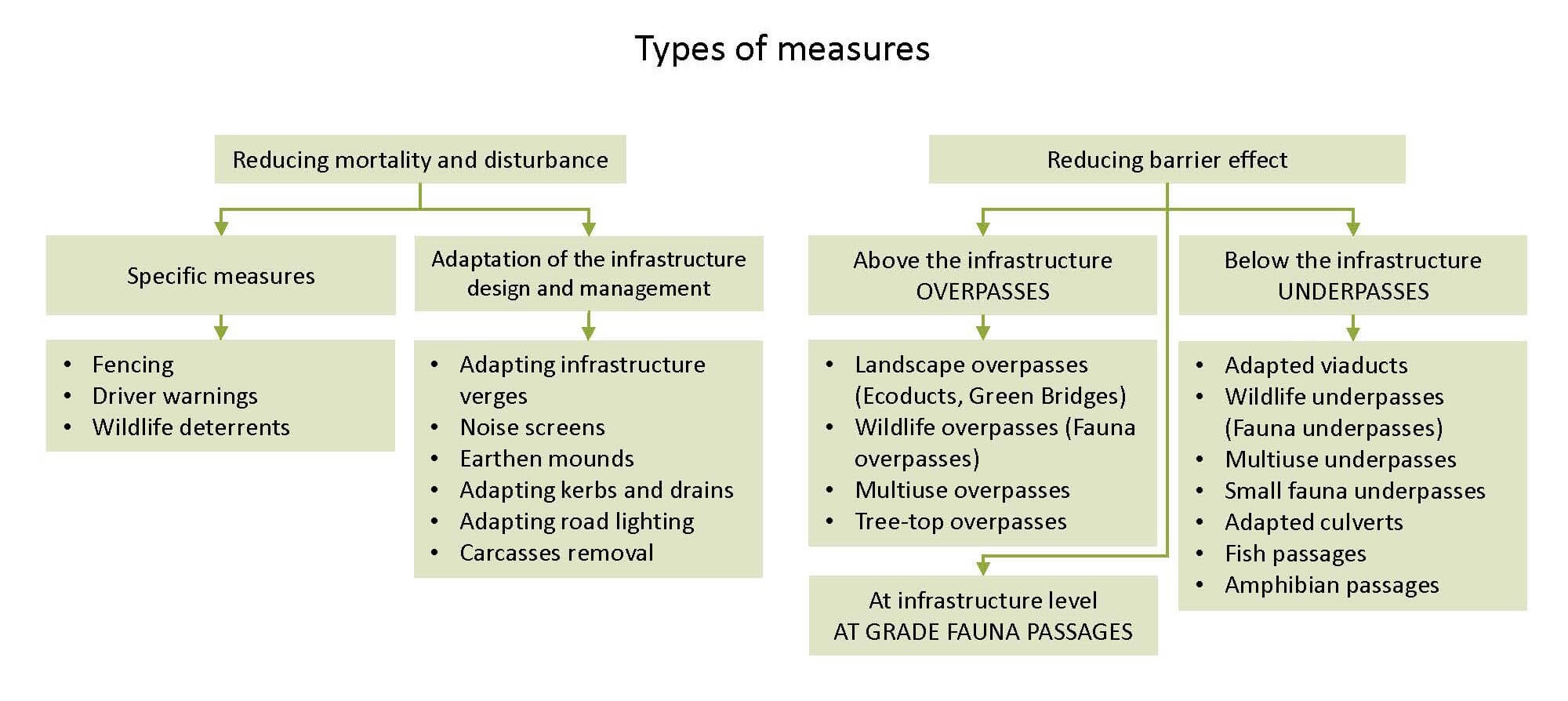Concern about the loss of biodiversity due to transport infrastructure networks has increased in the last decades, creating an incentive for environmental and transportation organisations to jointly address this problem, develop solutions and mainstream biodiversity within transportation.
Solutions need to be applied to both existing and new infrastructure while at the same time, climate change adaptions and technical innovations which include nature-based solutions will create opportunities to prevent the effects of fragmentation and reduce wildlife mortality.
The impact of transport infrastructure on biodiversity is diverse (see Chapter 3 – The mitigation hierarchy) and so are mitigation measures. This chapter focuses on measures to be applied by the transport sector to benefit biodiversity which can also increase traffic safety and enhance climate change adaptation (Figure 5.1.1). It includes:
- Measures that aim to reduce the impact of traffic on animal populations by reducing traffic-related mortality and disturbances to adjacent habitats.
- Measures that aim to reduce the barrier effect of infrastructure and consequential habitat fragmentation by providing safe crossing provisions for animals and links which connect habitats.
In this chapter, a general description is given for each measure followed by key information on design and points for special attention. Technical specifications for materials and technical design details are presented if they are of particular importance to ensure measures function and if these may be helpful in finding appropriate construction solutions. However, giving exact design instructions to the engineers is beyond the scope of this handbook, which is intended for use throughout Europe and internationally where appropriate. Country-specific guidelines may provide more detailed information. A list of other handbooks can be found in Transport Ecology Guidelines Portal.
Many measures have been well tested and research plus a large number of recent monitoring projects have increased knowledge considerably. Best practice according to this current knowledge is presented for each measure as well as further information on innovative techniques under development. Some existing measures, even if widely-applied, have nonetheless proven to be ineffective. These are discussed in the text, but no design details are given, since their use cannot be recommended.
In general, a combination of different mitigation measures is required to meet mitigation goals and to avoid any associated negative impacts. Fencing and wildlife passages in particular have combined effects. Fences reduce the number of collisions between wildlife and vehicles, but at the same time they increase habitat fragmentation, so they must always be combined with wildlife passages that allow target species a safe crossing. Measures to reduce noise, light and other traffic related disturbances to habitats related to infrastructure (HTI) and landscapes adjacent to infrastructure are also important to reduce habitat fragmentation.
The success of mitigation benefits particularly from clear objectives and measurable goals that facilitate monitoring, evaluation and adaptive management of measures taken. An appropriate mitigation plan should be developed early enough in the infrastructure life cycle to guide the development of appropriate mitigation approaches (see Chapter 4 – Integration of infrastructure into the landscape) and to safeguard funding for corrective measures that may be necessary over the lifetime of the infrastructure.
